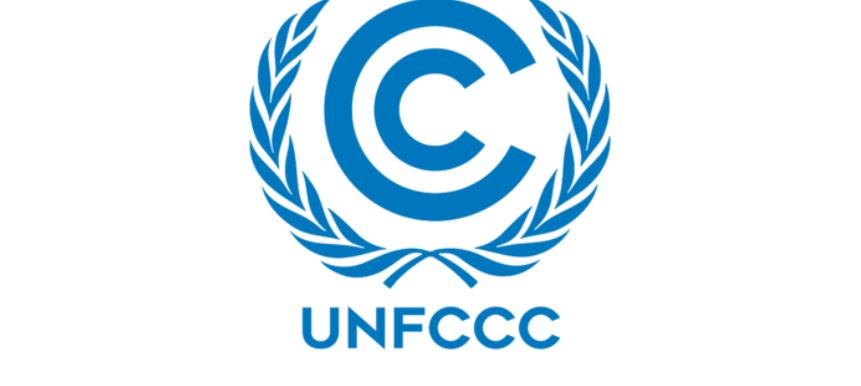UNFCCC Secretariat Recognition and Accountability Framework for non-party stakeholder climate action: what’s to be expected?
[July 2023] At the Bonn 2023 Conference, the UNFCCC Secretariat presented a recognition and accountability framework for climate action by non-state actors, aimed at enhancing the value of their contributions, improving the credibility of their commitments and strengthening monitoring in the context of the adoption of carbon neutrality.

Analysis note by the Global Observatory of Climate Action
- Author : Antoine Gillod, Director of the Observatory
- Date : July 2023
- Summary
- Context: the Net Zero wave wins over non-State actors
- Key to understanding. Carbon neutrality: a glossary
- Accountability: a rising issue in the global climate agenda
- Presentation
- Next Steps
- What is the expected impact?
At the Bonn Climate Change Conference 2023, the new Executive Secretary of the United Nations Framework Convention on Climate Change (UNFCCC), Simon Stiell, announced the creation of a new accountability framework for non-state actors in climate action. As carbon neutrality is being mainstreamed worldwide, can this initiative make a difference to improve transition plan integrity and better progress monitoring?
Context: the Net Zero wave wins over non-State actors
For years since the adoption of the Paris Agreement in 2015 and the release of the IPCC Special report on the impacts of global warming of 1.5 °C, carbon neutrality has become the compass for climate action strategies. 148 countries covering 88% of global emissions have now pledged to become “net zero” before mid-century. Launched in 2021 at COP26, the High Level Champions-led Race to Zero campaign also lists 11,309 non-State actors including 8,307 companies, 595 financial institutions, 1,136 cities, 52 states and regions, worldwide that have set a carbon neutrality target. Many international cooperative initiatives were also launched under the umbrella of the Global Financial Alliance for Net Zero (GFANZ) to mobilize financial actors around this target.
This movement even extended to companies operating in carbon-intensive business sectors, and even reached companies reluctant to undertake climate action. In early October 2021, the International Council on Mining and Metals (ICMM), which brings together 28 of the largest mining companies in the world, published an open letter stating that all of its members have committed to reducing emissions and to aiming for “carbon neutrality” by 2050. Several of its members had already adopted climate plans several months previously with “carbon neutrality” as an objective. Among the European oil Majors, BP, Shell, TotalEnergies, ENI and Equinor have integrated carbon neutrality into their growth strategies (cf. Global Synthesis Report on Climate Action 2021), although phasing out oil and gas production is a long way off. Even the American ExxonMobil, still embroiled in anti-climate lobbying cases, recently introduced the term “net zero” across its operations in the Permian Basin.
Key to understanding. Carbon neutrality: a glossary
“Carbon neutrality”, “Net Zero”… The Glossary of the IPCC Group III Climate Change Mitigation Report, published in April 2022, has updated the definition of the various terms in use:
- Carbon neutrality refers to the condition “in which anthropogenic carbon dioxide (CO2 ) emissions associated with a subject are balanced by anthropogenic CO2 removals. The subject can be an entity such as a country, an organisation, a district or a commodity, or an activity such as a service and an event. Carbon is often assessed over the life cycle including indirect (“scope 3”) emissions, but can also be limited to the emissions and removals, over a specified period, for which the subject has direct control”. Greenhouse gas neutrality applies more broadly to all greenhouse gases (CH4 , SF6 , N2O, etc.), and not just to carbon dioxide, as in the definition of “carbon neutrality”.
- Net zero CO2 emissions refers to the condition “in which anthropogenic carbon dioxide (CO2 ) emissions are balanced by anthropogenic CO2 removals over a specified period.”. Net zero GHG emissions also include all gases. The difference between “net zero” and “carbon neutrality” sometimes remains unclear and varies according to use. The IPCC holds that at the global scale, the terms “net zero” and “carbon neutrality” are equivalent.
On a smaller scale, “net zero” is restricted to emissions or removals that are under the direct control or territorial responsibility of the entity, while “carbon neutrality” also applies to emissions and removals beyond this scope. In practice, net zero can refer to a trajectory aligned with the 1.5 °C goal, such as for the Science-Based Target Initiative, whereas carbon neutrality is a state of static equilibrium between emissions and absorptions not based on any trajectory. It should be noted that following the AR6, the IPCC has adopted a broad view of the neutrality concept which allows it to be used at the organization or product level. So far, in the special report on the consequences of global warming of 1.5 °C, “net zero emissions” was only envisaged as “when anthropogenic CO2 emissions are globally balanced by anthropic CO2 uptake over a period of time. Net CO2 emissions is also referred to as carbon neutrality.”
In other words, the carbon neutrality of organizations such as cities or companies was not mentioned here. It should be remembered in this regard that the IPCC is not a normative authority, and this broad definition of neutrality continues to be debated.
In this context of massive adoption of the language of « neutrality », the credibility of the commitments depends on the ability of actors to rely on robust standards to 1) take stock of their emissions, 2) set targets, 3) formulate transition plans, 4) implement actions and 5) assess their impact on emissions. In response to the net zero wave, and in the lead up to the Party-driven process of Global Stocktake delivering its outcomes at COP28, the UNFCCC Secretariat is pushing for a stronger non-State accountability framework.
Accountability: a rising issue in the global climate agenda
The question of the accountability of non-state actors in climate action is part of a side process engaged at COP26, when UN Secretary-General António Guterres announced the convening of a High-Level Expert Group (HLEG) on Net Zero Emissions Commitments of Non-States Entities to improve the credibility of commitments and the monitoring of results by non-state stakeholders.
Composed of 18 experts and chaired by Catherine McKenna, former Canadian Minister of the Environment, the HLEG was launched in March 2022 and published its report Integrity Matters: Net Zero Commitments by Businesses, Financial Institutions, Cities and Regions, during COP 27 in November 2022. Through 10 recommendations, it aims at improving the quality, integrity and credibility of net zero commitments, transition plans and progress monitoring by individual actors and coalitions.
At the same time, COP27 and CMA4 (the “Conference of the Parties serving as the meeting of the Parties to the Paris Agreement”) both invited the Secretariat to « ensure greater accountability of voluntary initiatives through the Non-State Actor Zone for Climate Action platform » (NAZCA, now called the Global Climate Action Portal, or GCAP).
In response to this invitation, Simon Stiell, the new Executive Secretary of the UNFCCC, revealed two new documents and launched a new consultation process:
- The UNFCCC Secretariat Recognition and Accountability Framework for non-Party stakeholder climate action (hereafter “The Framework”)
- The Draft Implementation Plan with respect to Net-Zero Pledges of non-State actors and Integrity Matters, to operationalize the recommendations of the HLEG
- A public consultation, called “the Integrity Matters Implementation Dialogue”, open until 1 October 2023 to invite Parties and non-Parties to react to the Draft plan.
Presentation
The Framework aims to « recognize » and « celebrate » the voluntary contributions and progress of non-Parties to the Paris Agreement. This means that it is not a question of monitoring or sanctioning –which is beyond the scope of the UNFCCC’s mandate –but rather of valuing good practice, encouraging ambition and identifying the various obstacles that individual players and coalitions may encounter. To this end, it sets out « principles » for improvement in relation to commitments, governance, and data management.
The Implementation Plan aims to operationalize the HLEG’s recommendations in order to enhance the credibility of commitments, « check » progress and recognize good practice for individual non-State actors (companies, local governments…) and coalitions of actions (most of which engaged under the Marrakech Partnership for Global Climate Action). By and large, for the Secretariat, this will mean improving the Global Climate Action Portal. The plan is structured in two parts:
- Ensuring access to a common public repository for pledges, plans and progress reports from individual actors and coalitions. To achieve this, the Secretariat will produce:
- An improved version of the GCAP,
- A single template for reporting pledges, plans and progress reports,
- Privileged partnerships with reporting platforms (CDP, NZDPU…).
- Set up separate « validation » and « verification » frameworks for pledges, plans and progress reports. For this purpose, the Secretariat will convene :
- A working group of pledge verification entities to work on the GCAP,
- An independent expert group to make recommendations on validation approaches for transition plans,
- An assessment of approaches to third-party verification of emissions data and recommendations for improving such verification, leading to « the creation of a universally accepted approach to third-party verification of annual emissions inventories »,
- A technical support unit for these groups.
Next Steps
- Until 1 October 2023: public consultation on the Implementation Plan.
- July-August 2023: expression of interest from organizations wishing to take part in working groups/expert groups.
- December 2023 (COP28): publication of a progress report on the implementation of the accountability framework.
March 2024: the UNFCCC guidance will be transformed into standardized templates to submit net zero pledges and transition plans for publication in GCAP.
What is the expected impact?
What can be expected from this new initiative? First, it has to be said that the UNFCCC mandate is Party-driven and State-oriented, therefore it has limited monitoring power over non-State actors. Second, the UNFCCC Secretariat and the Paris Agreement are founded on a search for consensus among all the Parties. As a consequence, to maintain the lowest common denominator between all countries, the coercion capacity of the UN and its affiliated agencies and programs remain very low. At the end of the day, the implementation of the HLEG recommendations and the strengthening of the accountability framework are in the national States’ hands.
However, this new framework and draft plan may lead the Parties to pay closer attention to the credibility and impact of non-State commitments, targets, transition plans and actions. This Secretariat initiative also feeds into the rising debate about reforming the UNFCCC status.



